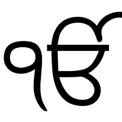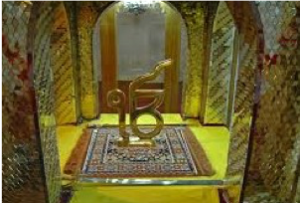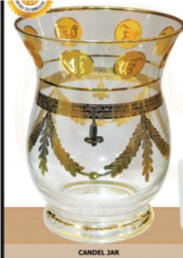Well, it’s that time of year again. Summer is coming to an end and the kids are back at school. But the end of summer also means that the wheel of the year is turning again and the first signs of autumn are beginning to manifest.
It also means that my favourite time of year is nearly here: Halloween!
Halloween, or as we Pagans call it Samhain, is probably our most popular and well-known festival. It’s the one that is most in the public consciousness, though usually for spooky decorations, fun costumes, parties, and the sudden appearance of a Halloween isle in the supermarket.
Although most people might not think of this time of year in terms of it being a Pagan holiday, it very much is and so many of the things associated with Halloween find their origins in our festival of Samhain.
This is a subject I’ve written and spoken about before, in multiple places. So, I’m going to cheat a little bit and save myself some time, by simply sharing an article on Samhain that I wrote in the past.
But for those of you looking for the cliffnotes summary:
Samhain is about recognising that death is a part of life.
It is a time for remembering the dead.
Wearing costumes, Jack O’lanterns, Bobbing for Apples, all have Pagan precedents.
Samhain was a fire festival, so bonfires have always been part of the festivities at this time of year.
For the full info, read on…
Samhain
In the modern world only Pagans and those who may be well informed are likely to use the word “Samhain”. For most people this age-old feast has been transformed into Halloween. But even Halloween retains traits of the ancient ways, still seen in our predisposition with the supernatural at this time of year.
Halloween is traditionally a time of ghosts and ghoulies, not to mention filling your belly with lots and lots of yummy foods. But these things aren’t really that far removed from the practices of our ancestors and here we will examine the beliefs and traditions that they held and the dedicated Pagans who still follow them today.
Origins
Samhain (pronounced “s’ow-in”) finds its most recognisable roots in the beliefs and practices of the ancient Celts.
To the Gaulic Celts it was once known as Trinouxtion Samonii. This translates as “three nights of the end of Summer”, which is when Samhain celebrations took place, around what we now call October/November. This was not just the end of Summer, but some believe it was also the end of the Celtic year. The land was slipping into a state of death, trees losing their leaves, the days are darker and shorter, and the crops are brought in for the final time that year. It is a time of endings.
Additionally, Samhain is also a time of blood. At this time of year, all farming is coming to a pause. Crops are done with and the animals, seeking food, come down from the higher pastures and return to the farm to be kept through the winter. Being as the farmers could not afford to maintain the entire herd throughout the winter, due to the shortness of resources, they would slaughter the most expendable members of the herd. The blood of these animals was seen as an offering to appease the spirits of the land, thanking them for their help in bringing forth the crops during the year and in the hope that they will provide the same help in the following year. It was a way to ensure that malign spirits didn’t turn on the property and its owners.
This belief in the power of blood even lasted through to the nineteenth century, where some places would still sprinkle the blood of a cockrel at the four corners of their houses in order to ward off negative spirits.
When the Dead Walk
Blood, death and darkness. Perhaps a traditional backdrop for our modern Halloween. But to the Celts, this may have been a time of darkness, but it was in no way a negative time of year.
Samhain was a between-time, resting between the living bright half of the year and the dead, dark half of the year. It is a time the land (and Gods) were entering into a state of death. The doors to the world of the dead were blown open at this time and the spirits of those that had died were free to wander the land.
It was traditional at this time to make these spirits welcome in the homes of their families. Doors and windows would be left open to allow them entrance and food would be set aside for them, so that they could partake of its “spiritual essence” and thusly enjoy the benefits of its nourishment.
This event was often envisioned as a great host of the dead wandering through the countryside, descending upon villages and towns, moving from house to house where at each stop, those who belong would remain behind to visit their relatives.
A common term for this was The Feast of the Dead, which is a term that is still used today by some Pagans.
This was a time for celebration, when the entire tribe – living and dead – would come together to celebrate the festivities. At the centre of these festivities was the ritual bonfire.
Fire in the darkness
One traditional practice in many Celtic communities was to extinguish all the lights in the village and light a single bonfire, central to everyone as a communal gathering point. Later, all the lights would be relit from the flames of this bonfire.
This practice was most widely and sacredly performed in Ireland, where Samhain was synonymous with the Feast of Tara. The Tara was the envisioned heart of the land, where every king of Ireland would come at the time of the feast. Nearby, at a sacred area called Tlachtga, a large bonfire would be constructed, ready for Samhain. Then the night before Samhain, all the lights in the land would be extinguished and the fire at Tlachtga would be lit. Once the fire was raging attendees would cast charms into the flames, symbolising their wishes for the coming year. Then torches would be lit from the bonfire and sent out across the land to relight it, beginning with its spiritual heart: the Tara.
The bonfire has retained its place in modern British culture; however, it has now been co-opted by Guy Fawkes Night and its original heritage has been forgotten in favour of the more recent gunpowder plot.
In some communities, the bonfires served a double purpose, by also acting as a protective charm against supernatural menaces.
It was a time of year when the barrier between life and death was at its thinnest, dark had triumphed over light and the spirits of the dead were free to roam. But other things from the lands beyond life were also free to venture forth and cause whatever trouble they wanted. In this time of darkness, the bonfire served to bring light to the community and dispel the darkness from places where nasty other-world creatures may try to lurk.
So, in this way, the bonfires were like beacons that would guide in ancestral spirits as they wandered, while at the same time driving off more malevolent beings.
It is thought that the ancient Celts would have burnt animal bones in these fires as a special measure to ward off evil spirits, which is where we get our modern word “bonfire”, from these ancient “bone-fires”. These bone-fires were no doubt built using the bones of the cattle that were slaughtered for Samhain.
Death, Renewal and the promise of Life
We are now very familiar with the natural connection to death and the spirit world that are expressed at Samhain. But as has already been mentioned, this is not a time for grieving. In fact, this is as much a time for looking forward as well as looking back.
We are inclined at this time to remember those who have passed over to the land of the dead and all the times we have had with them. As the end of the harvest we are also inclined to look back over the spring and summer that have just passed.
Remember, this is not just another passing holiday; this is the mark of the end of the year. Think about the things that may run through your mind at the end of December. You are probably given to spare a thought for the year that has just gone and take stock of the things that have happened. Was it a good year? A happy year? In the mix of the festivities you quite probably remember a lot of the good times, as anyone would at a party. Well Samhain is a party too, it is a celebration, albeit a solemn one in many regards. So those involved would spare the same kind of thoughts to the past year, but in addition they would also look forwards at the year to come.
You may make New Year’s resolutions as the New Year rings in and December becomes January. For the ancient Celts it wasn’t too different. They would give thought to what they would do with their futures and so this also became a common time for doing simple forms of divination, often as a part of the merriment.
This also makes a lot of sense at this time of year, as Samhain is seen as the doorway between worlds. It is the bridge between one year and the next, when reality is at its thinnest. It is neither one year, nor the other. A time between times and thusly “time” was just as flexible as the walls between the worlds, making it a perfect event for divining the future.
If you lived back then, you may have witnessed a local getting their future romantic interests predicted by watching walnuts crack upon a roaring hearth fire.
Samhain is also about new beginnings – or at least, envisioning new beginnings.
At this time of year, nature has retreated and died, and this brings with it the image of the Goddess descending into the underworld as she also enters the state of death. In today’s neo-pagan religions (especially Wicca) this is commonly just “the Goddess” as represented through all of nature as the bringer of life and womb of creation. However, in the Celtic world this concept of the Goddess would have been overlaid with that of their local Goddess who either fit the bill of the seasonal change or who stood as the most sovereign among the Goddesses, as at this time of year the Goddess (whoever she may be) was viewed as the Sovereign Goddess. She, who in majesty, withdraws for the other worlds.
While the Goddess draws away from us and descends into the underworld, her consort sweeps across the land, taking part in the Wild Hunt. The theme of the Wild Hunt is perhaps best represented through the horned God Cernunnos, moving across the sky at the darkening of the year. This Wild Hunt of his signifies two things, firstly the culling of the herds that is being performed by the slaughter of livestock and secondly, the gathering of the souls of the deceased. We visualise him stalking animals as a hunter, bringing down those that are weakest so that the herd will be strengthened and the community better benefits, thusly the animal slaughters are depicted, but he is also king of the underworld and ready to join the Goddess in her sovereignty. So, the Wild Hunt marks his return to the underworld, gathering the souls of the dead as they finish their time on Earth.
As he descends in the underworld, he takes his place with the Goddess. There are many myths at Samhain that describe how the God takes his position with the Goddess, sometimes showing him dying in order to be with her, some showing him as a resident guardian to her in her time in the underworld, while others depict him in the guise of two Gods with one slaying another so that the first may go to the Goddess to reclaim her for the world. This act is a sacred sacrifice. The God has travelled the land gathering the spoils of the Wild Hunt and now for the good of the world, he himself dies so that he can return to the Underworld.
As the Lord of the other worlds, the God shall stand as protector to the Goddess during her time in the underworld. For this in itself is a significant time, as it shows us that death and the spirit world is not merely the cessation of life, but instead a womb from which the Goddess will be born anew with the coming of Spring.
In modern Paganism the significance of this message is very important. Through it we understand how death is a step in life and how the dark months of winter show us the beginning of the New Year, for in these dark times life dwells in the womb of the Earth and spiritually in the other worlds. So, the beginning of the New Year coincides with the beginning of the life of the land, here in the cosmic womb of the natural world.
Samhain into Halloween – what we do today
Any and all of these ancient practices can and do get recreated among modern Pagans, but alongside them time has also gifted us with some newer traditions that fit marvellously into the spirit of the season. For the modern Pagan there is absolutely no reason why you shouldn’t utilise both sides of the season, old and new. It’s your Samhain, so do what you need to enjoy it. It is, after all, supposed to be a festival.
Costumes
Dressing as ghosts and ghoulies has a very obvious connection to the holiday. With the belief that all sorts of creatures are around and about, dressing the part to celebrate can be a good bit of fun.
But this tradition may also have some roots that are older and deeper than we may realise. Indeed, in some Celtic communities dressing up was a regular practice. There would be people who would often dress in masks and outfits and play pranks upon their neighbours – usually with a light-hearted attitude.
This was to symbolise the breaking of barriers that was occurring in the world. As the common rules of time and space came to waver, so to did the rules of community behaviour and people could feel free (to a point) to do some things that they would not normally be allowed to do, by breaking the flow of ordinary behaviour. In this fashion, people would dress up in order to look outrageous and add to the merriment.
Some researchers also suggest that it would have been common practice at this time for any Celts out on the Samhain nights, to wear costumes as disguises, so that they would not be recognised as human if they happen to cross paths with any unfriendly spirits.
Jack-O’lanterns
The history of the Jack-O’lanterns is a rather divided one and seems to be the end result of two different things.
According to some traditions, the Jack-O’lantern finds its origins in Ireland, where it was a practice to carve out root vegetables (primarily turnips) and place either a piece of coal or a candle within them, in the style of the modern Jack-O’lantern. This was done with a double meaning: firstly, the light from the candle acted as a guide for friendly spirits, so that they might be able to find their way and be guided in, while the scary face was a deterrent to malevolent spirits and drives them away.
If is thought that this practice didn’t specifically pertain to Samhain and that it may have occurred at other times of year as well but keeping in mind the dual purpose of the traditional Samhain bonfire, it isn’t hard to see how this tradition might have got started.
Additionally, there is the folklore tale about an unlucky Irishman by the name of Jack, who is said to have caused some kind of great mischief in his life and eventually had a run-in with the Devil. Well, as it turns out, Jack was actually a rather shrewd thinker and managed to trick the Devil and trap him until he promised not to take Jack’s soul to Hell. The Devil agreed in exchange for his own freedom.
Of course, when Jack came to die, he was left in a bit of a pickle. Being far from an upstanding citizen he was refused entrance to Heaven and the Devil kept his word, barring him from Hell.
Jack wondered what he would do and where he would go, so the Devil mockingly made him a lantern with which he would endlessly wander the world seeking a place to rest.
From this folk tale he became known as Jack of the Lantern or Jack O’Lantern.
When the Irish immigrated to North America they brought the tradition of the Jack-O’lantern with them, but somewhere along the way they found it was easier to carve pumpkins than it was to carve turnips, bringing us to the modern Jack-O’Lantern that we have today.
Bobbing for Apples
This tradition actually goes back further than the Celts, finding its origins in the ancient Roman Empire. The Romans once celebrated their own festival of the last harvest around the time of late October, called the Feralia. During this time, they celebrated by honouring the Goddess Pomona, the Goddess of fruit trees. The apple was a sacred symbol of Pomona and was used in celebrations of this festival.
When the Romans invaded the Celtic lands, the practices of the Romans blended a little with that of the Celts and so the symbolic reference to apples was passed across. Today we still celebrate this via the tradition of apple bobbing.
Even today this time of year remains a time for fun and frolics, when we all have a good excuse to dress up and enjoy ourselves.
For many Pagans this is a time to welcome the dead and give honour to the Gods, but whether you call it Samhain or Halloween, everyone is free to join in the fun, throw parties or if they wish just stay in and watch horror movies. So, make it a good one!
This resource was written by Luthaneal Adams, one of RE:ONLINE’s Email a Believer team.





